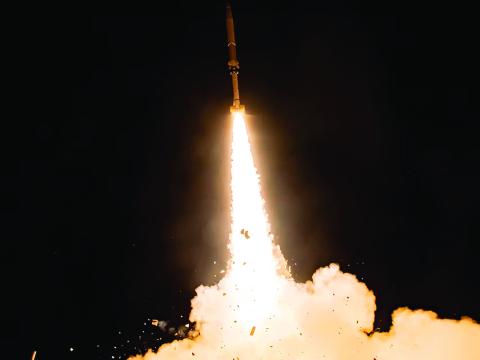President's Commentary: Small Steps Matter in the Space Domain
Hardly a week goes by without major news about space. We’ve all been dazzled by the images from the James Webb Space Telescope, which has singlehandedly spawned a new era in unmanned space exploration. Also, Blue Origin, Virgin Galactic and SpaceX periodically make headlines for probing space travel’s potentially endless possibilities.
When Neil Armstrong stepped onto the surface of the moon in the summer of 1969 and declared it “One small step for man, one giant leap for mankind,” no one imagined how indispensable space would become to everyday life in this country and around the world, how vital to national security, economic prosperity and scientific advances or how integral to modern military power.
No nation is as dependent as the United States on space-based capabilities.
As the U.S. Defense Department strategy points out, ensuring the availability of space-based capabilities is “fundamental to maintaining military superiority across all domains.” Unfortunately, the strategy notes, space systems are not immune from attack, and those vital space assets are tempting targets at all levels of conflict.
China and Russia remain our top competitors in space. The former recently accused the United States of weaponizing space while it and Russia invest heavily in that very effort. In its recent threat assessment, the U.S. intelligence community noted that the Chinese military is fielding destructive and nondestructive ground- and space-based antisatellite weapons, and Russia is developing and fielding counterspace weapons, including jamming, cyberspace, directed-energy systems, on-orbit weaponry and ground-based antisatellite capabilities.
Army Gen. James Dickinson, commander of U.S. Space Command, recently told the Senate Armed Services Committee that China has increased on-orbit satellites by 27%, bringing its total from just over 100 to more than 500 in 10 years. China’s recent counterspace demonstrations include the DN-1 and DN-2 direct descent antisatellite tests and a hypersonic glide vehicle test. And Russia is actively working to regain its prestige as a space power, exemplified by the destructive direct ascent test last November.
Neither Neil Armstrong nor the millions who watched his one small step could predict today’s integral connection between the space and cyberspace domains or the degree to which both affect the Defense Department’s concept of joint all-domain command and control, which will be enabled by the proliferation of new, high-throughput communications satellites in multiple orbits.
In his Senate testimony, Gen. Dickinson rightly touted the need for space domain awareness to help identify and analyze what happens in space. Such capabilities are part of a resilient space architecture that enables command and control and protects the freedom to act in the space domain.





Comments